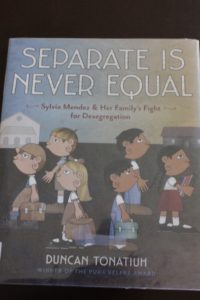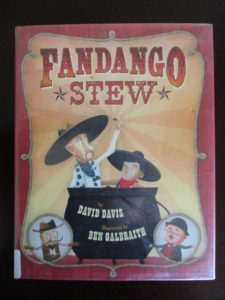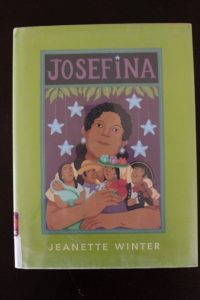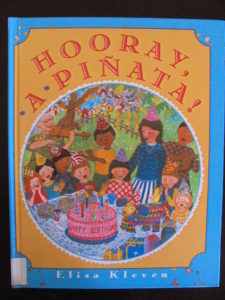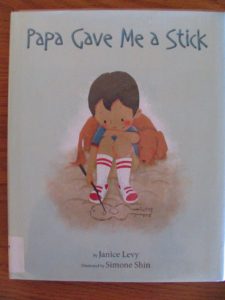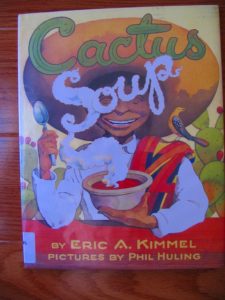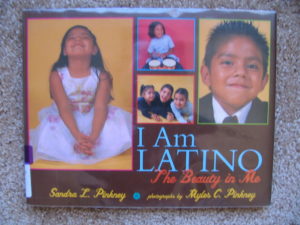By Meg Medina, Illustrated by Angela Dominguez (Candlewick – 2015)
Mia’s Abuela (“Grandmother” in Spanish) has left her sunny house with parrots and palm trees to live with Mia and her parents in the city. But when Mia tries to share her favorite bedtime story with Abuela, she discovers that Abuela can’t read the words. Mia helps Abuela with her English while they cook, and Mia learns some Spanish, too. However it’s still hard for Abuela to learn the words she needs to tell Mia all her stories. So when Mia sees a parrot in the pet-shop window, she has the perfect idea for how help Abuela.
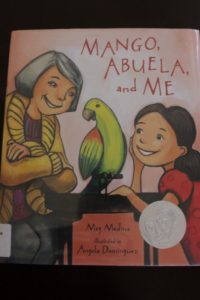
MiaのAbuela( スペイン語の”祖母”)は、オウムがいてシュロの木が繁る大自然の中にある日当たりの良い家を後にして、都会に住むMiaの家族と同居することになった。でも、ベットタイムにMiaがお気に入りの話をしようとしても、Abuelaは言葉がわからないことに気ずいた。Miaは、Abuelaと料理をする時には英語を教えてあげ、Abuelaからはスペイン語を学んだ。しかし、Abuelaが自分の思いを話すには、まだまだ充分ではなかった。そしてMiaがペットショップでオウムを見つけたとき、Abuelaを手助けする素晴らしい名案が浮かんだ。

